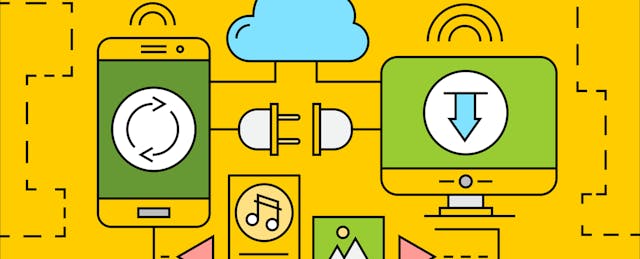“I was the poster-child for anti-technology in my district,” says Willie Maddux, an 8th grade World History teacher at Prescott South Middle School in Cookeville, Tenn. The thought of using technology used to leave him, “worried about student engagement because we talk a lot. I like interacting with the kids and getting that personal relationship. I had the vision that with personalized learning they would be online the whole time and I would never talk to them. I didn’t want to lose them."
Maddux’s fears are not unique. Many educators associate personalized learning technology with a push to commercialize and dehumanize education—keeping students glued to screens with little human interaction. It’s created rifts within the educator community as well. An article exploring personalized learning published by the National Education Association, the biggest teacher’s union in the country, was accused by its members of promoting ideals that “took away from human-to-human contact.” Others take a much harsher stance. A recent Huffington Post contributor and teacher, Steven Singer, went so far as to call for educators to rebel against the technology he felt was forced on them, noting how school districts who insist teachers add technology to lessons where turning teacher autonomy into a “pathetic joke.”
The fierce resistance has caused some edtech executives to reframe the narrative they use to bring technology into schools. These days, it’s become a standard precautionary measure to reassure educators that their tools will support—not replace them.
This softer approach, allowing teachers to have more say in how products are built and the option to adopt what works best for individual classrooms and teaching styles, is what Maddux says changed his view on personalized learning technologies.
“If you try to learn everything about Google Classroom or Canvas [all at once] and you are not into technology, you are going to think you can’t do this,” says Maddux. “But if you start small and take your time at your own pace, set up things you know you are going to use at a rate that you are comfortable with, the transition will be easier. That eased my anxiety a whole lot more.”
Helping Maddux get over his qualms was Lance Key, an instructional technology specialist at Putnam County’s Virtual Instruction to Accentuate Learning (VITAL) program, which offers online courses to district students. Key and Maddux are based in the same school. They met in coffee shops and school offices, where Maddux discussed specific problems he had with his classroom and Key offered technological solutions.

“We at VITAL feel that if we are going to personalize learning for students, we need to personalize learning for teachers also,” says Keys. “Willie opposed technology, but I approached him because I knew he was a great teacher. Instead of changing everything that Willie does, we wanted to give him a few things that will aid him. Now in Canvas [the school’s learning management system] we just come in, click a button and all the curriculum is loaded for him, giving him more time with students to help them.”
Things have changed in Maddux’s classroom since he began using Canvas and Google Classroom this school year. For instance, there are fewer group conversations on topics. Instead, he has more individual discussions with students based on their interest or level of understanding. However, he is still searching for balance, noting that many current events discussions are better done as a class so differing views can be heard.
“Last Friday, for example, during our lesson on current events we talked about the Warriors not going to the White House as most championship teams do. We do these debates as a class,” says Maddux. “Things where we have different inputs, where their different backgrounds can affect their opinion, we talk about as a class.”
He has also seen more precision and accuracy with grading. When all papers are turned in digitally with timestamps, there are fewer opportunities for students to use the classic “dog ate my homework” excuse, which helps with parent-teacher meetings, notes Maddux.
“I had a mom come in last week in the middle of class, and I just pulled up the online system, and it said no submission,” Maddux explains. “I just showed her, and so her son had no excuses for not doing his work. Unfortunately, he got grounded, but it helps the communication with parents.”
Today Maddux teaches three different online courses, World History, U.S. History and a Career Exploration course. His students are also adjusting to the change in their teacher’s new style. Maddux says he is guiding his students as they learn to do all their assignments online. He taught seventh-grade last year, and now he is teaching 8th grade, so the same group of students sees him in a whole new light.
“I have told them when we started that this was new to me and that we were going to struggle together,” says Maddux, “When I make mistakes I ask them to help me out, call me out and give me some feedback. We are making changes on delivery every week.”


